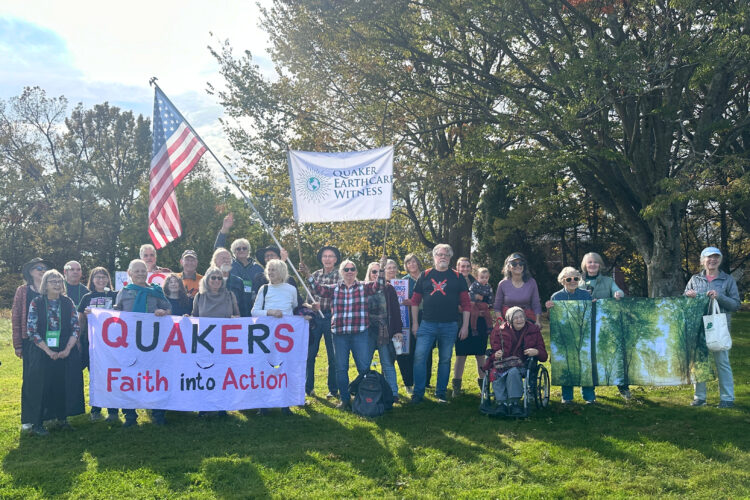Bridging Gaps and Proposing Next Steps
Mary Gilbert
A book review by Mary Gilbert
Crisis of Global Sustainability, by Tapio Kanninen. #74 in the Routledge Global Institutions Series, Routledge, New York, NY, 10017, 2013.
Maybe you’re like me; you’ve heard of the book Limits to Growth and its warning that we can’t have endless economic growth on a finite planet, but you haven’t read it. Perhaps you also wonder why nobody seems to have paid attention to the book’s caution that “business as usual” would lead to financial collapse in the first decades of the 21st century.
Tapio Kanninen’s new book, Crisis of Sustainability, explains exactly how the side-lining of the idea of planetary limits came about and goes beyond that to suggest ways to stop it. Indeed, that side-lining is still going on and is responsible for much of the planetary pickle in which we now find ourselves. The decision-makers who should have been taking this warning seriously for the last 40 years are continuing to let us down.
Crisis of Sustainability is a sophisticated cautionary tale. The Club of Rome [1] published Limits to Growth in 1972, arousing both wide acclaim and wide criticism, as well as flat-out denial. Resistance came mainly from two groups: economic players who would undergo financial loss if they took it seriously; and professionals wedded to the mainstream paradigm in economics, who criticized the report’s methodology. Crisis of Sustainability shows that we are facing today the worst-case scenarios presented in Limits to Growth back in 1972.
THREE EXAMPLES OF HOW THE CRISIS HAPPENED
Crisis of Sustainability tells how vested interests have been protecting their profits for a long time. I had understood the Stockholm conference in 1972 [2] to be a clear breakthrough for the Earth. However, Kanninen says, “The Declaration (on the Human Environment) was passed in spite of …opposition from key states…which succeeded in taming the document’s tone and ambition so that it conformed better to their national interests” (p. 60).
I thought the report of the Brundtland Commission in 1987 [3], which provided the definition of sustainable development now in use and spelled out the “Three Pillars of Sustainability” (economic, societal, and environmental) now much discussed at the UN, was another triumph. Kanninen says the reason the report was so widely accepted is that it “accepted the idea of environmental limits, but only because these limits were not seen in the report as a brake on economic development or growth” (p. 50).
I have also been told that the original Rio Earth Summit in 1992 was a cause for rejoicing, when the United States, under President George Bush, led the world in setting goals for protecting Earth. But again, the ambitious platform intended at the beginning of the conference was watered down. The strongly worded Earth Charter was not adopted. Kanninen quotes Simon Dresner [4], saying that what the conference approved was “a lengthy and uninspiring piece of diplomatic jargon” (p. 63).
WHAT CAN BE DONE NOW?
Kanninen says, “Understanding is the first step; the second is action” (p. 144). He has explained the delay in acceptance of the concept of limits to economic growth; now we can plan around the factors that have been proven not to work. The UN is bogged down with negotiations in which narrow national interest consistently trumps actions for the common good.
The idea of a Green Economy, which was central to but not endorsed at the June 2012 Rio+20 conference, encourages businesses to continue to grow but to do so in an environmentally friendly way. Kanninen quotes Elizabeth DeSombre [5], stating that “… the Rio Conference fully institutionalized the shift from seeing industry and wealth as the cause of environmental degradation to viewing them as solutions to environmental problems” (p. 64).
We are stuck with business and its best friend—finance—as dominating forces, however. One thing we can do is influence business design so that waste becomes the basis for new cash flow. In nature there is no waste, and nature should be our model.
We need to build a strong civil society, and that work is happening. Kanninen notes (p. 20) that at the World Social Forums, run by and for civil society, everyone understands the interconnections among what the business world still largely sees as separate issues. We need to open channels to hear what the world’s people are saying. Some groups are creating “space” for civil society to function and platforms on which a united civil society can stand.
This is a planetary emergency. If we manage to keep our global temperature increase down to 2 degrees C we can expect a 9 meter rise in sea level by the end of the century, enough to swamp many island nations and some low-lying coastlines. Current negotiations have us on course for a 4 degree rise, which will give us a 70 meter rise, possibly in the same amount of time. Kanninen lists a variety of ways things could go, and I will tell you the most exciting:
- Revise the UN Charter completely.
- Establish interlinked crisis centers around the globe, using the International Peace Institute as a model
- Establish regional crisis centers modelled on the European International Crisis Group.
- Establish national and local sustainability centers.
Kanninen suggests the following: [6]
1) Change the concept of success from keeping the system from collapsing and achieving small steps, mostly in organizational design, to one with future benchmarks, “bottom-line indicators” for the most dangerous trends affecting human survival, like the manifestations of climate change.
2) Speed up the intervals for major IPCC reports; the current 5 to 7 years is much too long. Also upgrade the status of the World Meteorological Organization and the UNEP reports on climate so they can produce reports quarterly and annually.
3) There should be urgent joint effort by UN member states to improve the quality of global negotiations, through trying different forums, groupings and techniques.
4) Change the time perspective from the governmental short-term interest based on election cycles and such to long-term with focus on the world we are leaving our children and grandchildren. There should be a switch from narrow, national interests to common, global interests.
EVALUATION AND RECOMMENDATIONS
Crisis of Sustainability consists of 144 dense but readable pages. It is thoroughly footnoted and has a selected bibliography of a dozen especially recommended titles. Kanninen’s presentation is level and factual and thorough, without passionate rhetoric, so you don’t feel manipulated, just very well informed. I was challenged by the book’s overlapping timelines. Kanninen keeps jumping back to the 1970s to fold in another ingredient, which is what happens when you are discussing a complex system where everything has a simultaneous effect on everything else. An appendix with an inclusive timeline might have been helpful.
Frankly, I loved this book! It was very alive to me because it addresses an area of my deep concern and fills a lot of mental gaps with an organized context for what I already knew. Facts that were scattered now hang together for me. Conclusions I had been drawing about the inability of the UN to direct us out of the quagmire we have dug for ourselves are validated. Nation states are not capable of setting aside narrow frameworks based on their own perceived best interest and taking constructive action for the whole of society, to say nothing of the whole of the planet.
This book explains what went wrong and makes constructive suggestions for next steps. I would like to make Crisis of Sustainability required reading in all schools of business, and for the entire U.S. State Department as well as equivalent agencies in other countries.
ABOUT THE AUTHOR: TAPIO KANNINEN
Tapio Kanninen is Senior Research Fellow at the Ralph Bunche Institute for International Studies at the Graduate Center (RBIIS) of The City University of New York and a Co-Director of the Project on Sustainable Global Governance at RBIIS. A long-time UN staff member Dr. Kanninen was Chief of the Policy Planning Unit in the Department of Political Affairs (1998–2005), Head of the Secretariat of Kofi Annan’s five Summits with Regional Organizations and worked in a UNEP-funded project at the UN Statistical Office on establishing global framework for environmental statistics.
NOTES AND RESOURCES
1 The Club of Rome states that its mission is “to act as a global catalyst for change through the identification and analysis of the crucial problems facing humanity and the communication of such problems to the most important public and private decision makers as well as to the general public.” http://www.clubofrome.org/.
2 UN Conference on the Human Environment (UNCHE) Stockholm, 1972.
3 Definition of Sustainable Development given in the Brundtland Commission report: “…development which meets the needs of the present without compromising the needs of future generations to meet their own needs.” World Commission on Environment and Development, Our Common Future, (Oxford, Oxford University Press, 1987).
4 Simon Dresner, The Principles of Sustainabillity (London, Earthscan, 2008) 43-44.
5 Elizabeth R. DeSombre, Global Environmental Institutions (London: Routledge, 2006) 27-28.
6 Personal correspondence with the author.

